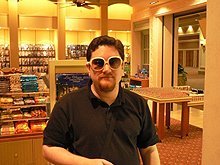 SkyBar
SkyBarPetro Palace Hotel
Malaya Morskaya Ulitsa 14
Saint-Petersburg, Russia
www.petropalacehotel.com
Where is it?
On the top floor of the Petro Palace Hotel. Take the elevator up and then step into the main hallway. The bar is down the hallway about 20 feet, on your right.
What's it like?
 This hotel bar, one of two in the building (the other is in the lobby), positions itself (at least according to the hotel's website) as having "without doubt... one of the best viewpoints for some of Saint-Petersburg‘s most notable landmarks. With its spectacular view over St. Isaac’s Cathedral, the Hermitage and beyond, it is the ultimate venue for your party, event or function, and the same time the Sky Bar is the area of tranquility, providing a contrast to the hustle and bustle of the city life below."
This hotel bar, one of two in the building (the other is in the lobby), positions itself (at least according to the hotel's website) as having "without doubt... one of the best viewpoints for some of Saint-Petersburg‘s most notable landmarks. With its spectacular view over St. Isaac’s Cathedral, the Hermitage and beyond, it is the ultimate venue for your party, event or function, and the same time the Sky Bar is the area of tranquility, providing a contrast to the hustle and bustle of the city life below."Well, the bar is certainly tranquil, being more like a lounge than anything else -- a fact furthered by the place's two-level interior, which features many pieces of dated furniture that look like they were taken from a 1970s furniture catalog. Pretty kitschy, if you think about it. A sharp step downward serves as the separator between the two levels, and on my visit two women took hard tumbles from the upper level to the lower level because of that step. Ouch.
 As for views: Well, I can't say that these were all that spectacular either. The actual window you look through to see the cityscape is small (maybe 6 feet wide and three feet high) and limited in vantage, and several of the hotel's exterior supports cross in front of it, further hindering your view. (The view atop St. Isaac's is far superior.)
As for views: Well, I can't say that these were all that spectacular either. The actual window you look through to see the cityscape is small (maybe 6 feet wide and three feet high) and limited in vantage, and several of the hotel's exterior supports cross in front of it, further hindering your view. (The view atop St. Isaac's is far superior.)Still, it's a quiet place (outside of the house music) and very unassuming, and if you've spent the day walking around this great city and want a quick nightcap before heading back to your room and calling it a day, this isn't a bad place to do it. Not worth visiting if you're not staying here, mind you, but still a nice place regardless. Service was friendly and the beer (including the wonderful Russian brews Nevskoe and Baltica) were cold, flavorful and inexpensive (about 50 rubles per large glass, or about $2).
 The toilets hold many similarities to the ones I experienced in the hotel's lobby toilets. They are small, almost closet-like in size, covered in blue tile (whereas the lobby ones are covered in black tile) and are spotless and well-kept (with two air fresheners mounted to the walls to keep these compacted environs free of foul smells -- something I wish other recently visited places like the Hermitage, Catherine Palace, and Russian Museum would incorporate).
The toilets hold many similarities to the ones I experienced in the hotel's lobby toilets. They are small, almost closet-like in size, covered in blue tile (whereas the lobby ones are covered in black tile) and are spotless and well-kept (with two air fresheners mounted to the walls to keep these compacted environs free of foul smells -- something I wish other recently visited places like the Hermitage, Catherine Palace, and Russian Museum would incorporate).More importantly, these are a little more spacious than the lobby toilets. Not by much, mind you, a foot in length and a foot in width, but that makes all the different here. They are still tight (but only accommodate one person at a time), but they are a vast improvement over the ones downstairs.
 Marks out of 10:
Marks out of 10:8. You really appreciate that little bit of extra space that the lobby toilets lack.
Comments to the Management:
A fine toilet, as unassuming as comfortable as the bar in which it's set. Now if only your bar had a better view of the city.....




























































